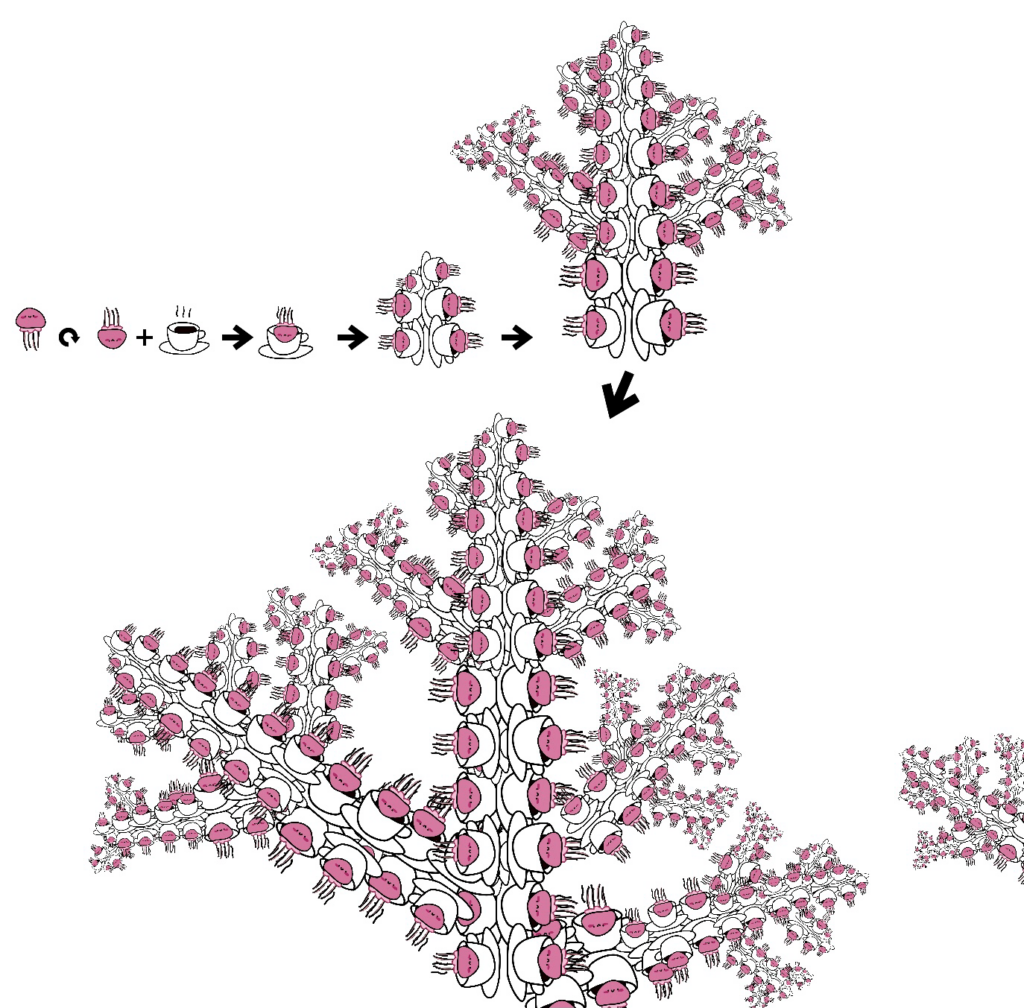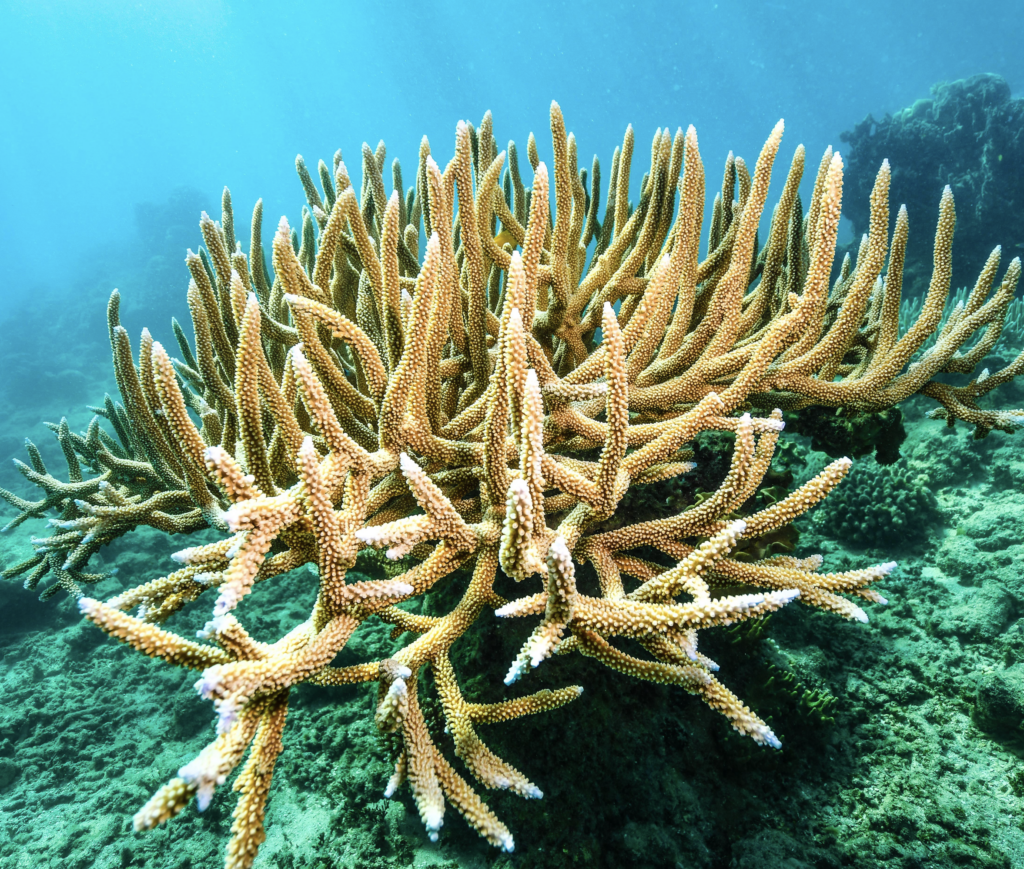Last month I was able to participate to a virtual workshop from MMRI (Maldives Marine Research Institute)
It was great, and you guys need to know about it too!
At this stage if you clicked on “read more”… You are curious but also probably thinking like « But Amandine we are here to see/learn about corals, reef fishes, sharks or mantas and you are telling us about a virtual meeting?! »
Well if you want all of that we need corals around and that is what this virtual meeting was all about. Unfortunately mostly about coral stress and bleaching, how to asses/ identify coral bleaching, event and its scale.
Coral bleaching, is a stress status of the coral. OK what is a coral then?! And how can it be stressed?!
Corals are ANIMALS… looking like rocks most of the time with the colours of trees… again most of the time (lets keep this description broad & efficient). How do these animals look like? Like a jellyfish upside down… Yes tentacles up, they have many… one individual is called a Polyp.
Polyp are protecting their soft body inside a coffee cup skeleton (Corallite)…. And all packed together with so many others creating nice structures that you are looking at or picturing in your head when you think coral.

There are 2 team among corals, different looks:

- Team Soft: their polyps aka individual (our tentacle up jellyfish) are showing off their 8 tentacles shaking them looking fluffy (pic on the left)
- Team hard coral: have 6 or multiple of 6 tentacles that they hide during day time in a hard skeleton (the coffee cup) making them look like rocks (right).
Now not only you know the true identity of corals but you are able to make the difference between the 2 families of corals (tip: if the coral is moving with the water its a softy, if its not its a hard coral!) here you go: look at you coral identifier 101!
Next time you take your crush to the beach you have a cool way to show you are an educated person and in connection with nature… 😉 Don’t push okay: no touching corals they are sensitive and can stings…. Remember the jellyfish resemblance ?! It doesn’t limit to the look : they are relatives and have the same stinging cells…. So only looking.
The hard skeleton makes the cool structure you see underwater. Within the hard coral family you can identify 7 different s types of structure aka shapes:
Branching, boulder, mushroom, vase, table, slipper, cabbage
But Thats not all folks!
Hard corals get their color from a relationship with an algae called ZOOXANTHELLAE. Coral provide shelter to the algae who live at the surface of the skeleton. Those algae provide food to corals.

So, coral get food and skin tan by hosting algae. Those algae get a place to stay: its a win-win relationship called Symbiosis.
This is the explanation for most common coral colours you will see in Maldives. Corals have same colours as plants: green, brown, orange, yellow, red as they get their colours from… an algae so a plant.
The other colours like blue, purple, pink are appearing on hard corals when they express something special; it can be realising chemical for defence, a response to too much sun light (like me when I’m sunburn no need to explain, you can see it from afar: I’m red), for communication (as coral can’t talk they signals with other means) or other reasons….
Now you know hard corals are animal with a rocky exoskeleton covered in algae… And soft corals look fluffy but sting all the time….
As animals they need enjoyable conditions to develop and thrive… when those are not met and or too extreme corals bleach…
Check up part 2/2 for the bleaching story!


One response
Thank you for every other wonderful post. The place else could anybody get that type of info in such a perfect approach of writing?
I have a presentation subsequent week, and I’m on the search
for such information.